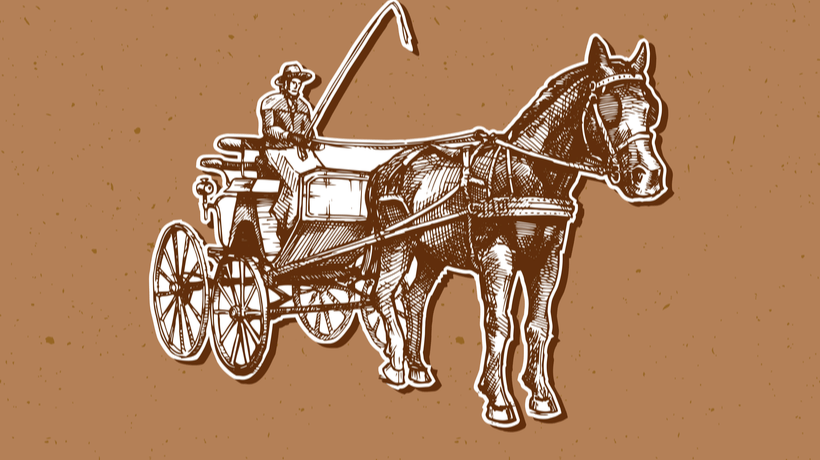Identification And Strategies For Conversations
Before the invention of the automobile, most people relied on transportation by such modes as horse-drawn carriage. Buggy whips were used as prods to guide the horse’s movements and direction. Perhaps there was great competition to make the best buggy whip. Undoubtedly, there were one or two companies who made the best ones on the market. Then came that automobile. When the carriages were no longer needed, nor were the buggy whips.
This is a story that those in the business and marketing fields are quite familiar with. The story ends by concluding that it came down to the survival of one company making buggy whips. It was said that this company made the best buggy whips ever.
However, the term “buggy whip” has crossed over and been applied to other industries. For example, print newspapers are said to be the “buggy whips” compared to current journalism and their technologies. For a moment, recognition of the term can be applied to education, but the question is: “Applied how?"
We begin by looking at the fact that there are flavors of learning available today as varied and diverse as ones of ice cream. From the traditional schoolhouse structure in pioneer days to molded, progressing adaptations, in response to limitations of COVID-19, these frameworks and models of hybrid-learning continue to evolve and morph. This applies not only to K-12 but to higher education and workplace training as well.
Buggy Whips Today
If a conversation is taking place (virtually or non-virtually) with educators and other stakeholders and the topic is education or training, a “buggy whip” somehow makes its way into the room (or ZOOM).
Examples could be:
- Discussion of the “in-person classroom” versus “all-online” lecture delivery;
- Recommendations to design classes as web conference recorded material illustrating the classic “sage on a stage” paradigm versus the creation of engaging, interactive modules in an eAuthoring Learning Management System (such as Moodle, Canvas, Captivate, etc.), which justify the “guide on the side” theory.
There may be a plethora of other “whips” in micro-version form, not listed here, appearing from time to time in staff meetings and curriculum development committees.
In these instances, it is beneficial to have a proactive strategy in place to tackle conflicts that are certain to rise. In order to do that, should we approach this from the mindset of an automobile company CEO or a print newspaper editor? If so, the odds of creating a great divide among the players in the industry/field have a high degree of certainty. Instead, would it not be better to consider the eyes and ears of the buggy whip assembly line worker or the typesetter in a print office?
As educators, are we concerned with this? Should we be? If so, what is the answer?
Perhaps, in a word: Acknowledgement.
It would be great if we all presented new, modern, trend-setting ideas, thoughts, policies, theories, and practices to other educators that are welcomed and embraced without hesitation. When collaborating with others on any educational platform, this is ideal.
But, if this is not possible, there may need to be a different mindset. The suggestion is different, without elements of polarity. While keeping in mind that cooperation is the preferred outcome, this word pops up again, and here it is again in caps: ACKNOWLEDGEMENT.
What Is Important To Acknowledge?
- That there is great value in the cumulative experiences of educators. Respecting those professionals will aid in facilitating a good, positive negotiation.
- The world is changing, and sometimes there are limitations caused by things such as pandemics, leading to feelings of insecurity in many areas of people’s lives. These feelings are worthy of our Empathy. This goes beyond simply “putting yourself in another’s shoes.” It takes a big picture look at the human beings we are interacting with and appreciates that we would like to be treated with the same honor.
- When progressing toward other modes of assessing, designing, and delivering education, educators require a Support system to rely on to give them a sense of Confidence, even if only on a personal level. There may be enough frustration in the challenges of the innovation itself and having the backing of others may ease the discomfort of unpredictable consequences.
- Last, and most importantly, the Buggy Whip itself. By Understanding how previous modalities have worked in the past, there is the possibility of using these historical perspectives in building bridges to new innovations. What is the best way to understand? Listen and Validate the thoughts, feelings, attitudes, and views of where the buggy whip came from, and what it means to the educator.
Conclusion
There may be others, not on this list, but indeed the list is growing. It does take time and effort to consider these acknowledgments, but there is a great return on this investment. The ones who will benefit will, of course, be the educators. However, the long-term benefits are paid out to the learners!
Imagine what can be done with the tools in this list and building great solutions in a safe, supportive factory. Doors and windows to learning (and eLearning) could open to something new, exciting, engaging, innovative, and even unexpected:
A new and improved BUGGY WHIP!

